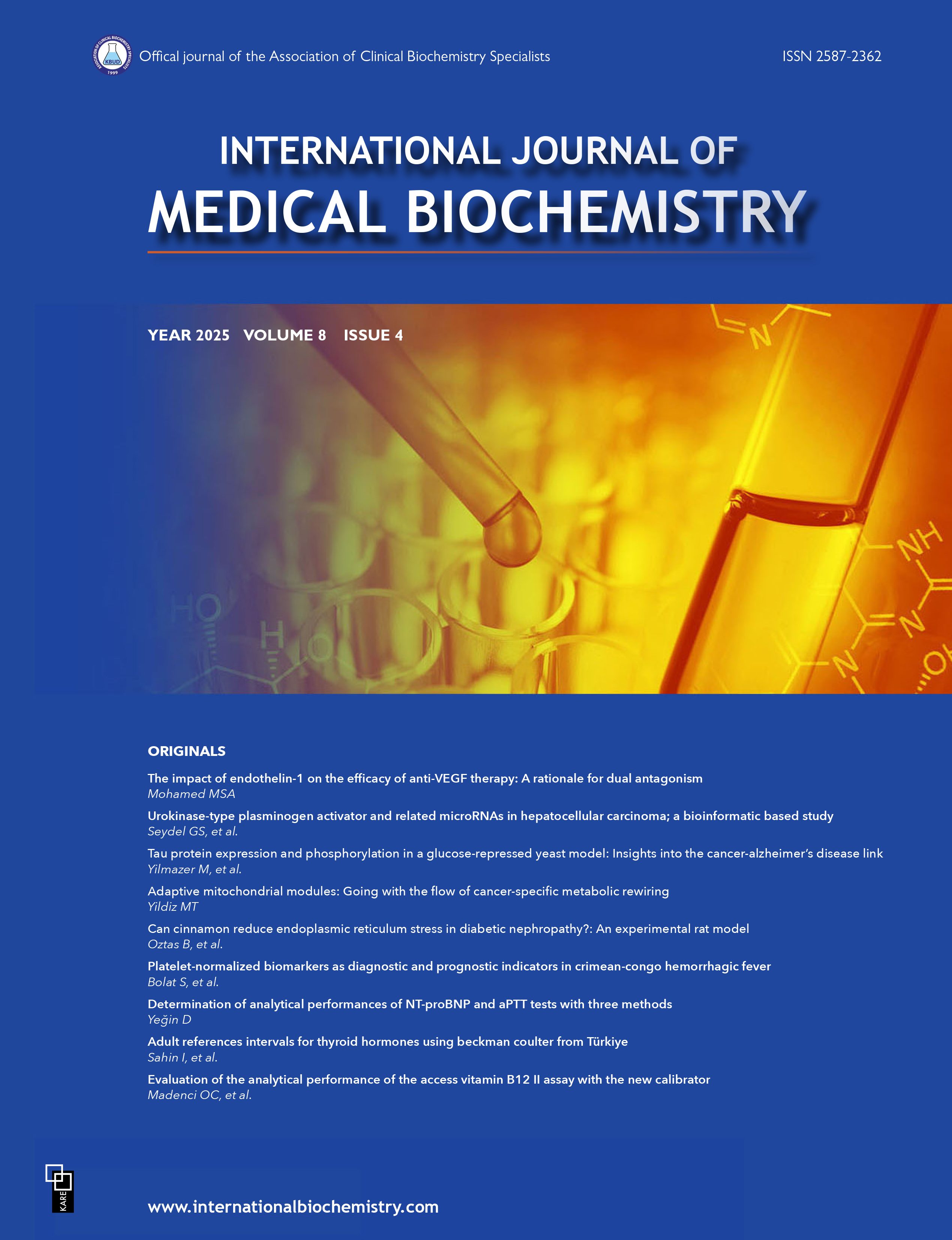An evaluation of efficiency in an emergency laboratory by turnaround time
Muhammed Fevzi Kilinckaya, Çigdem Yucel, Turan TurhanDepartment of Clinical Biochemistry, Ankara Numune Training and Research Hospital, Ankara, TurkeyINTRODUCTION: Accuracy, precision, timeliness, and authenticity are the 4 pillars of efficient laboratory services. Clinical biochemists generally overlook timeliness as an important attribute. However, turnaround time (TAT) is usually regarded by clinicians as the benchmark of laboratory performance. TAT can be classified by tests: priority, population served, etc. The aim of the current study was to both evaluate and compare the TAT of the test panels used in the emergency laboratory of Ankara Numune Training and Research Hospital.
METHODS: The TAT for tests carried out in the emergency laboratory in 2016 was recorded. The TAT limit for each analyte was determined by the hospitals quality control department. Routine biochemistry, arterial blood gas, troponin, erythrocyte sedimentation rate, complete blood count, beta-human chorionic gonadotropin, coagulation panel, and urinalysis tests were evaluated. Samples were grouped by admission time, day, and staff on duty. Samples that exceeded the TAT limit were determined and compared in terms of sample receipt time, day, and staffing. Statistical analysis was performed using SPSS for Windows, Version 15.0 (SPSS Inc., Chicago, IL, USA). P<0.05 was considered statistically significant.
RESULTS: A total of 286,577 samples were analyzed in 2016 in this laboratory. The TAT of 30,129 samples exceeded the established time limit. The mean TAT of the staff who worked a day shift on weekdays was significantly higher than that of other shifts, with the exception of arterial blood gas (ABG) testing (p=0.000 for all panels). The mean TAT of the staff who worked a night shift on weekdays and weekends was statistically different, excluding coagulation (p=0.08) and ABG (p=0.09) tests.
DISCUSSION AND CONCLUSION: It is strongly recommended that all of the staff who work in the laboratory be sufficiently informed and educated about TAT. Additionally, evaluation of TAT should be taken into consideration in the routine workflow of laboratories.
Manuscript Language: English







